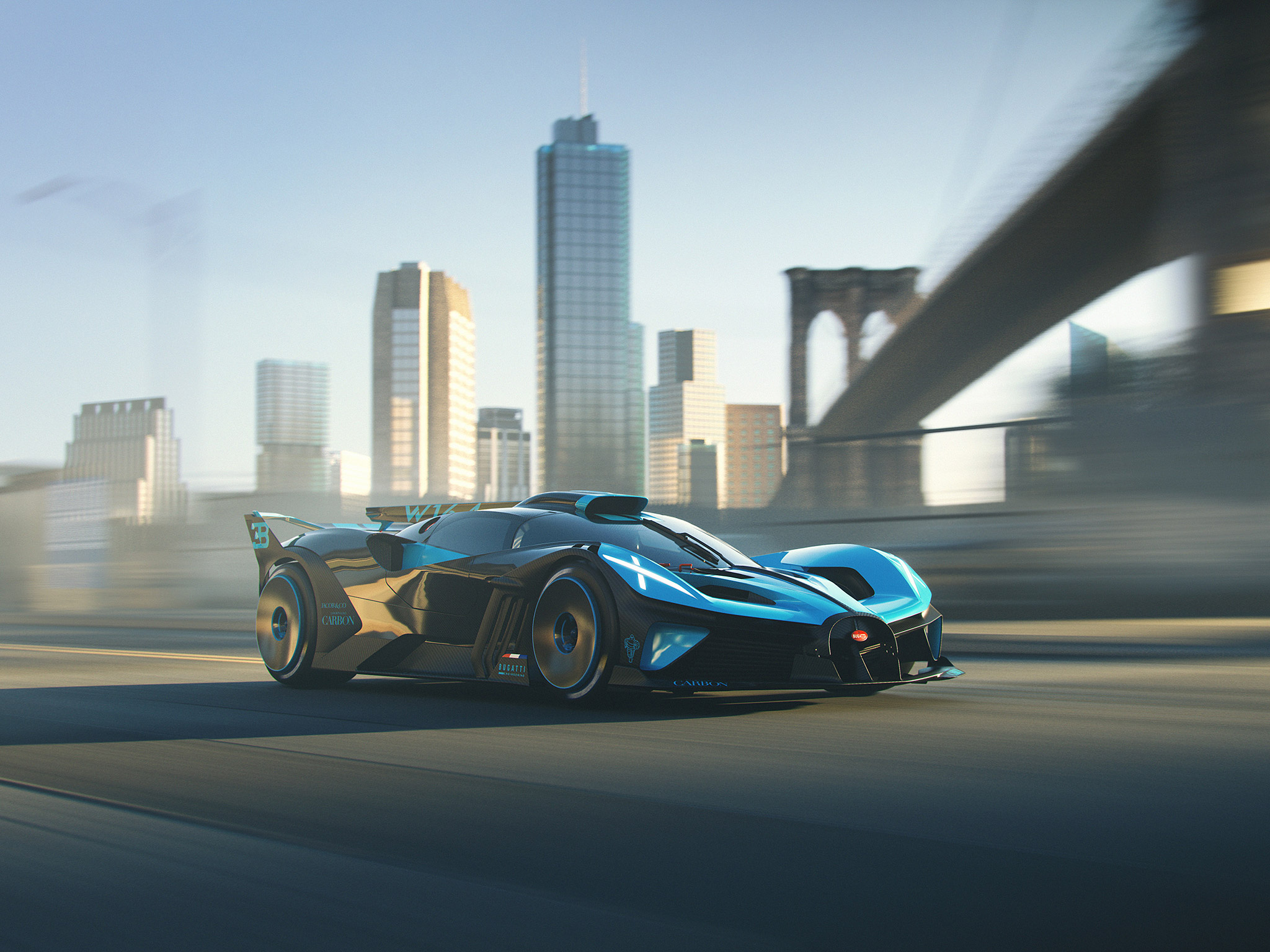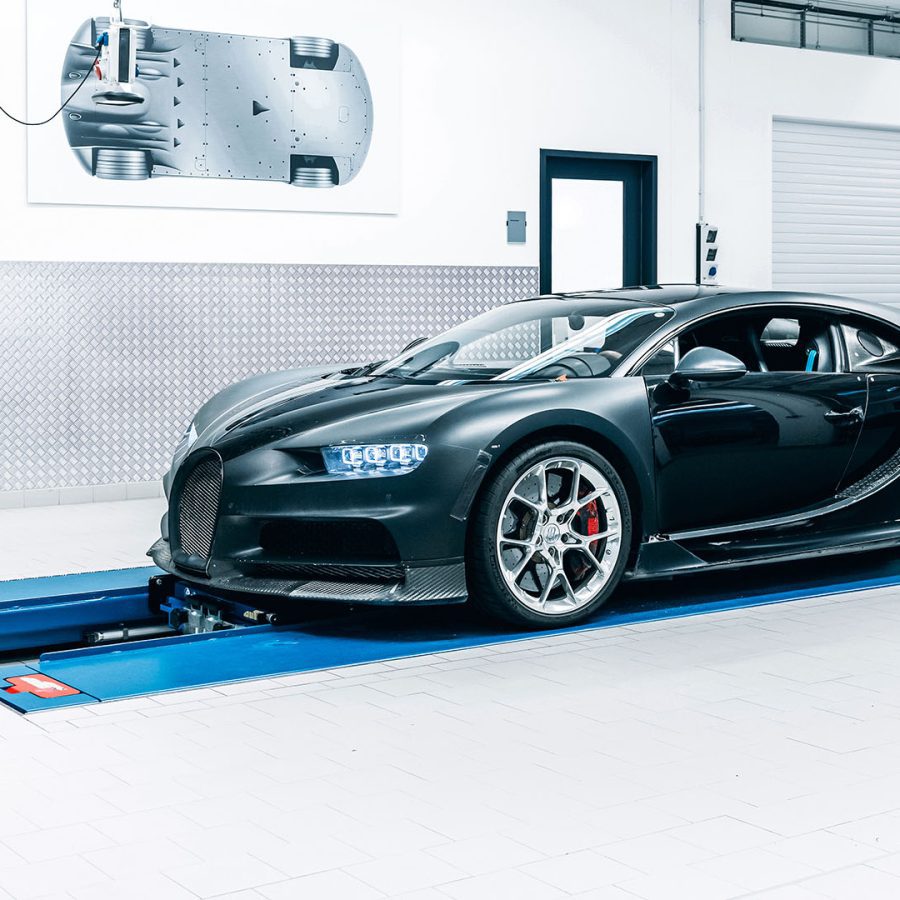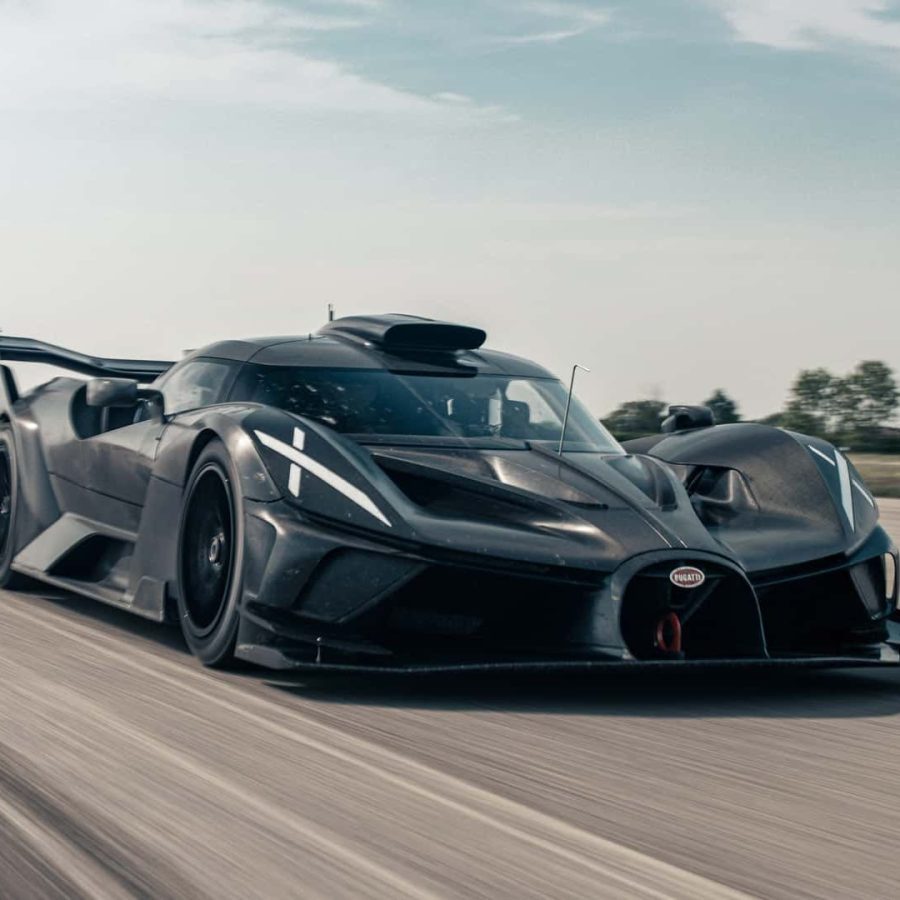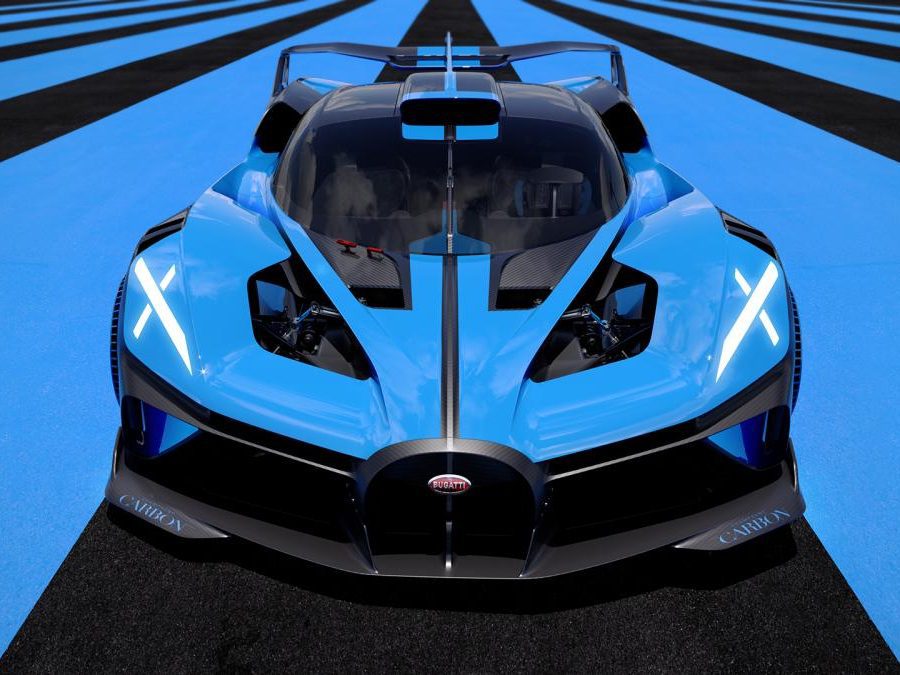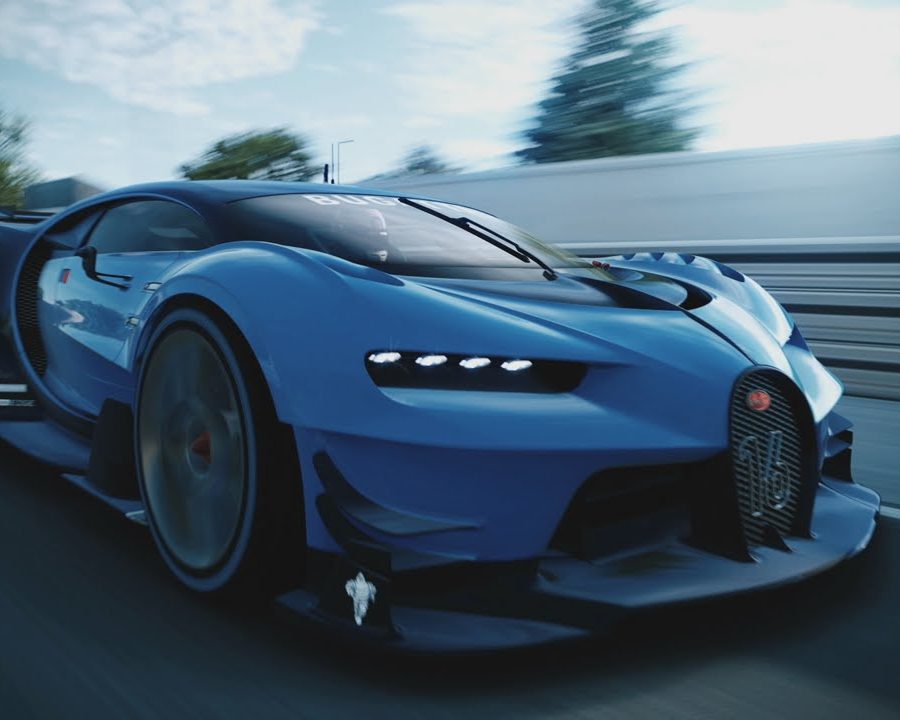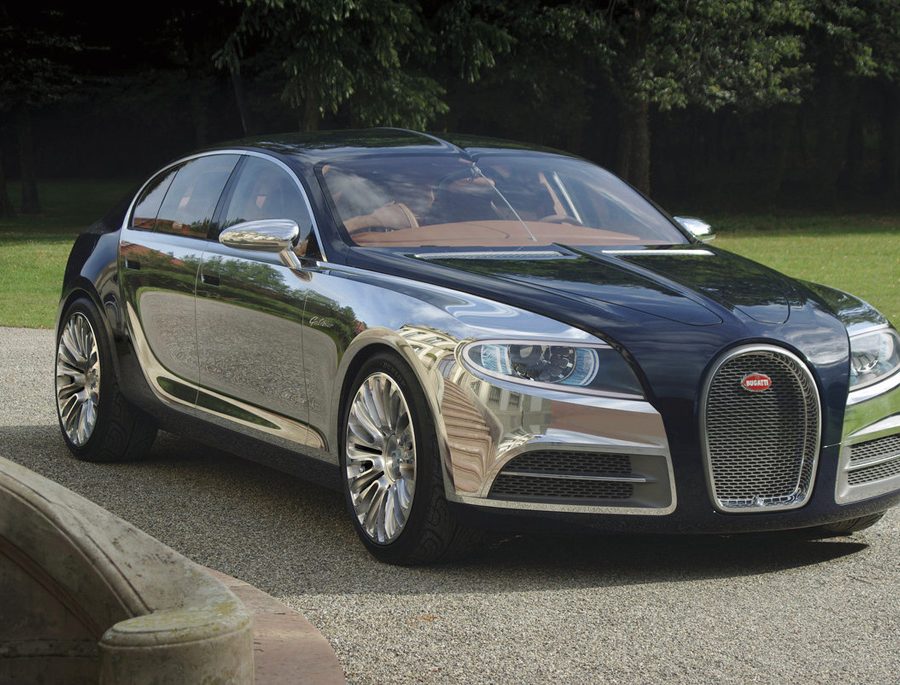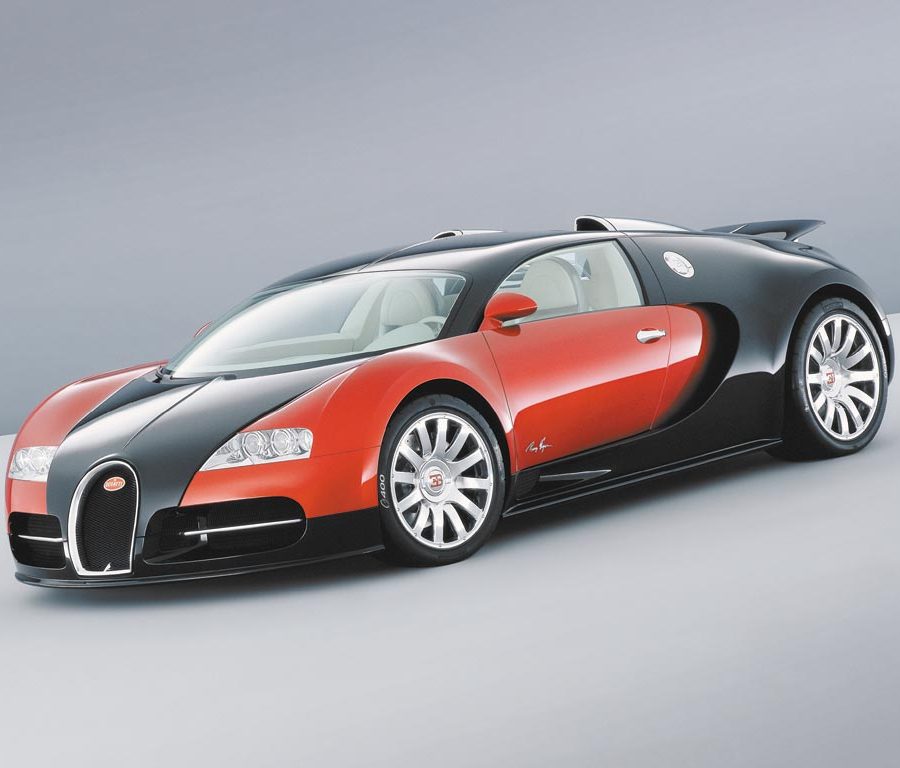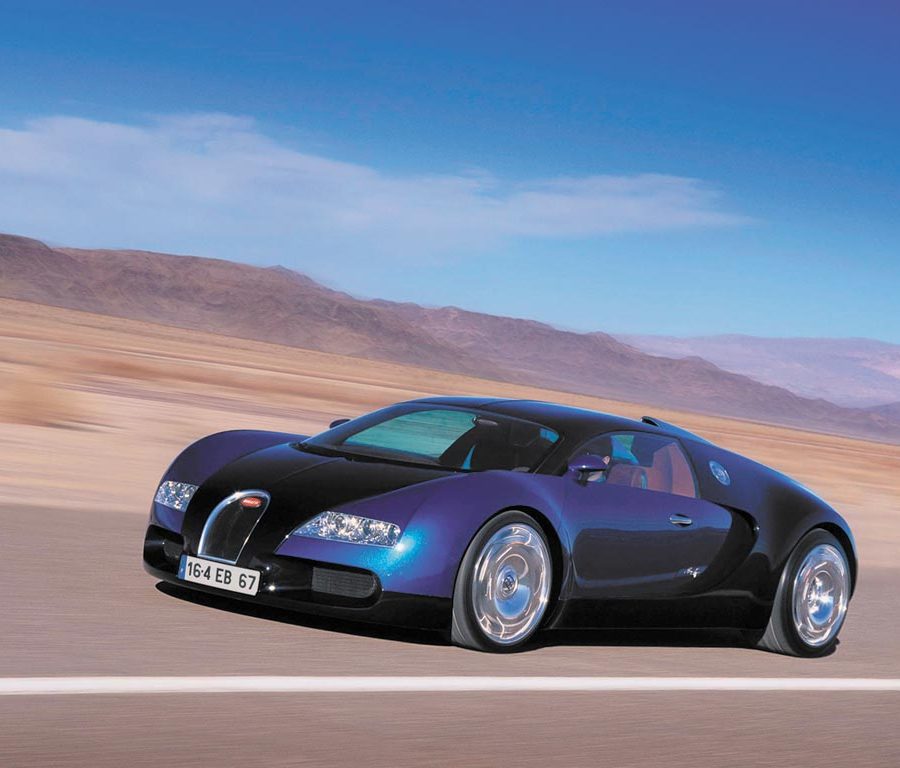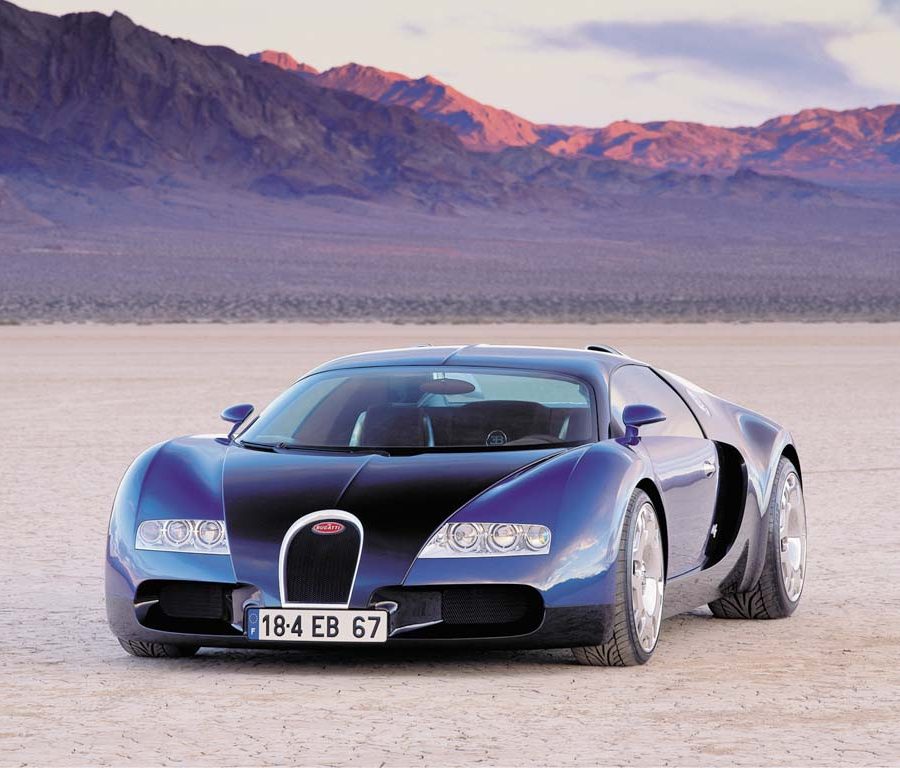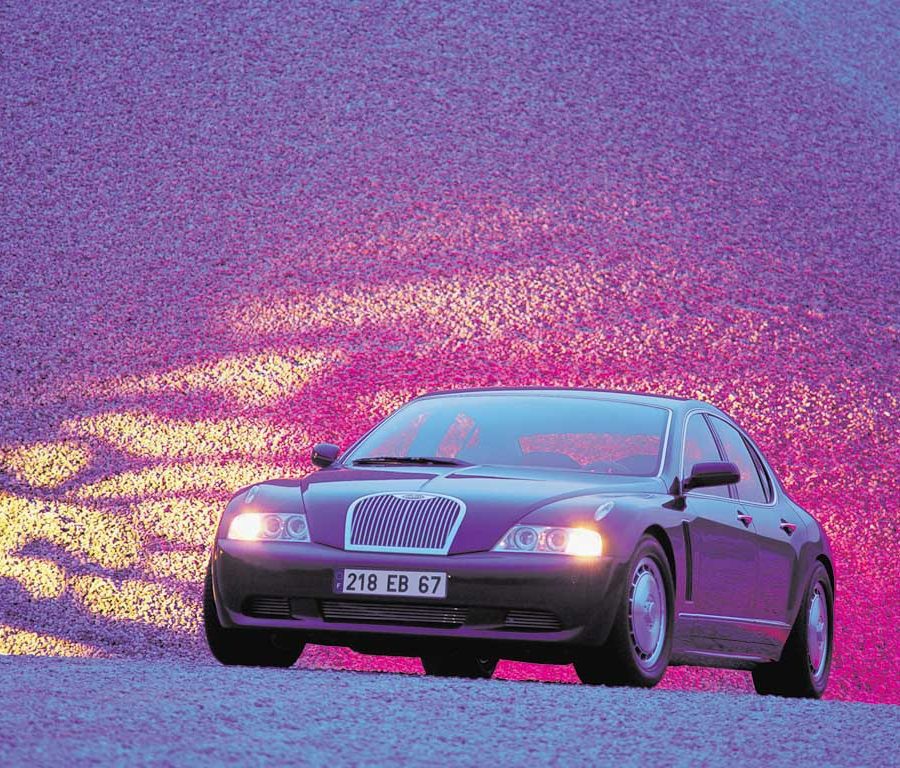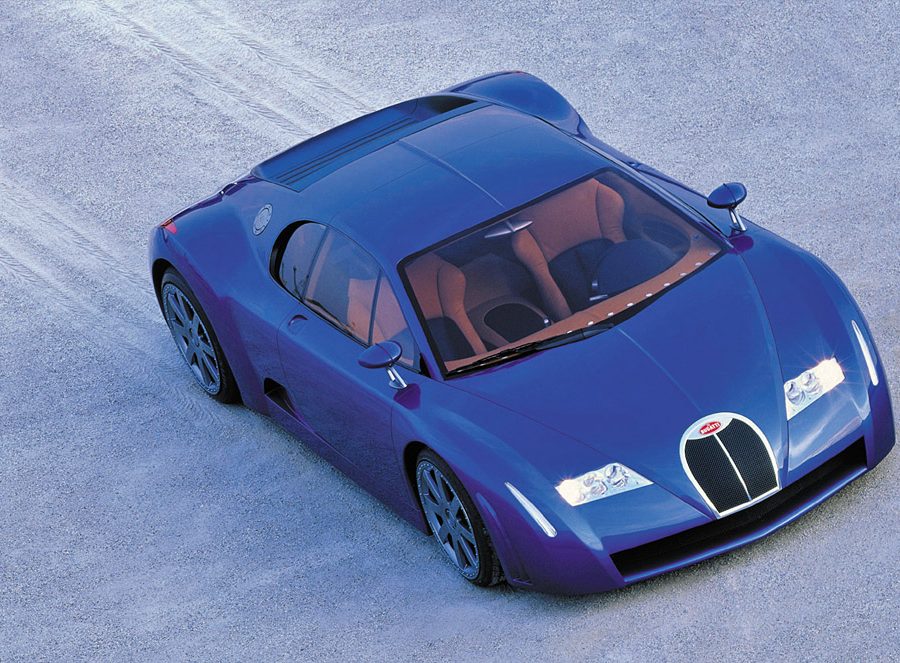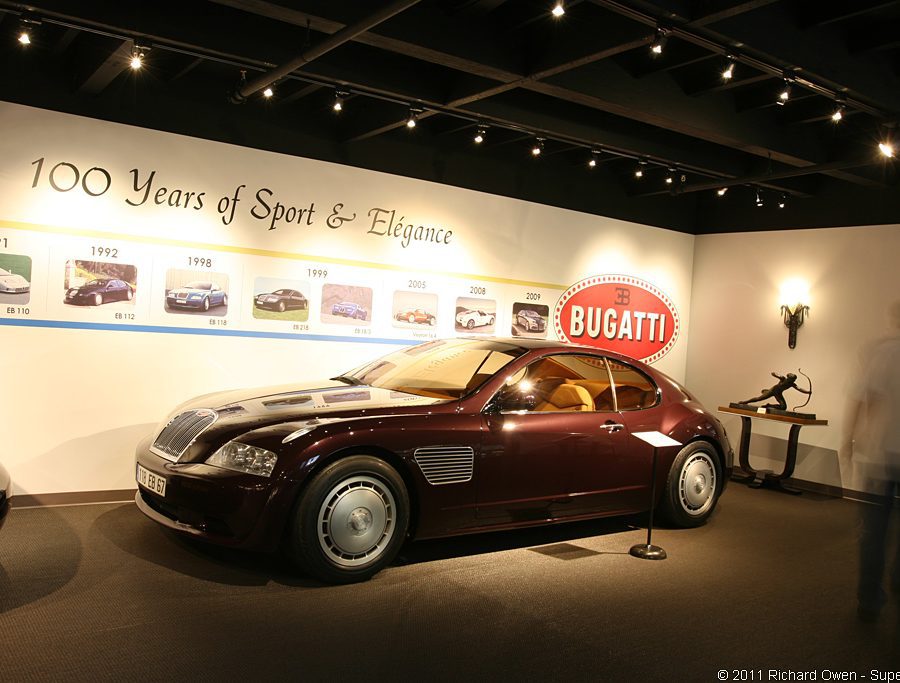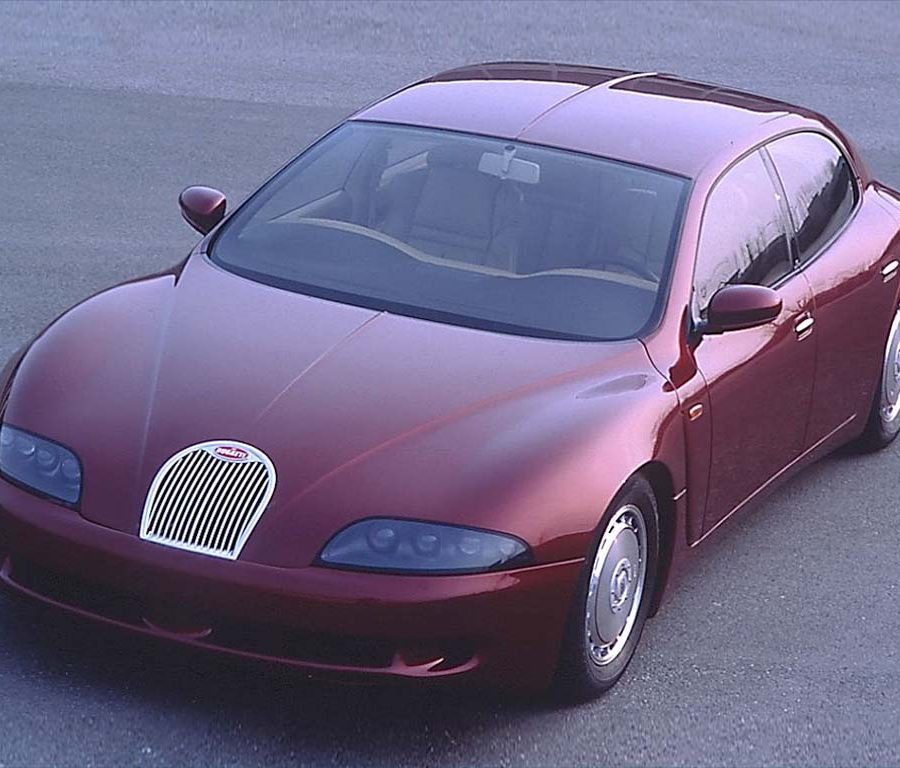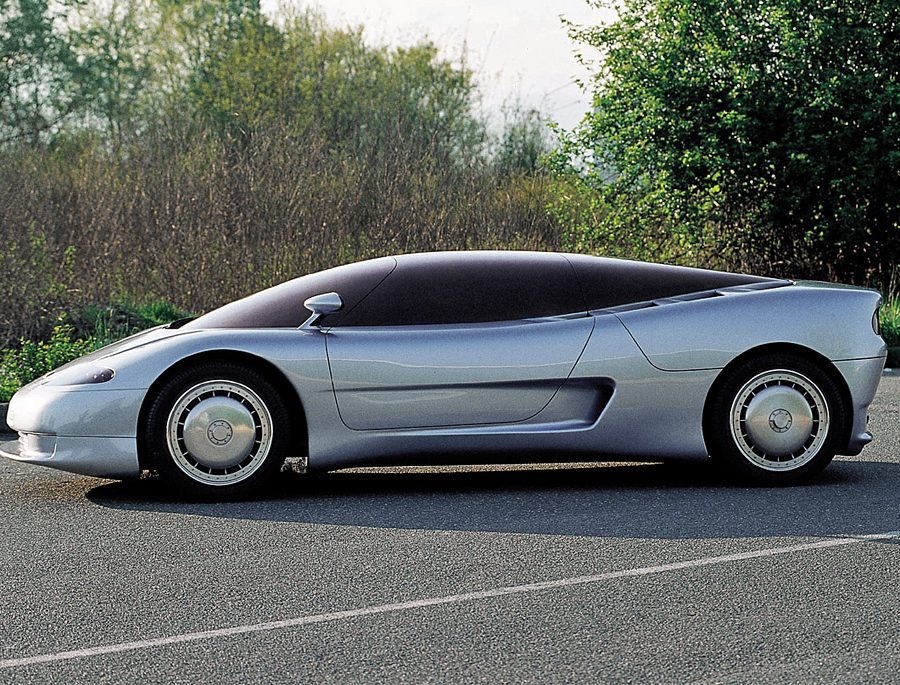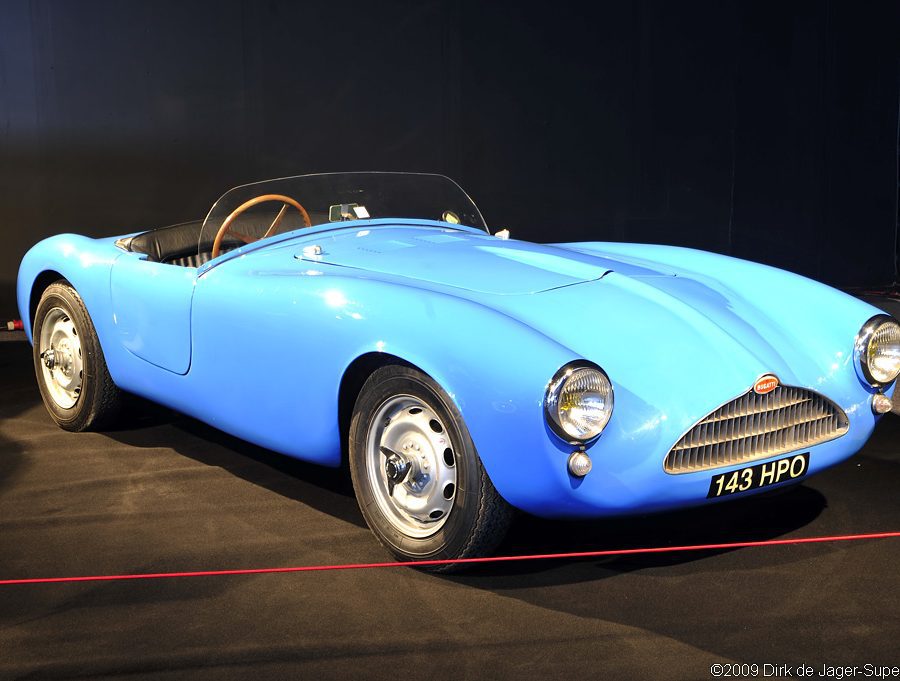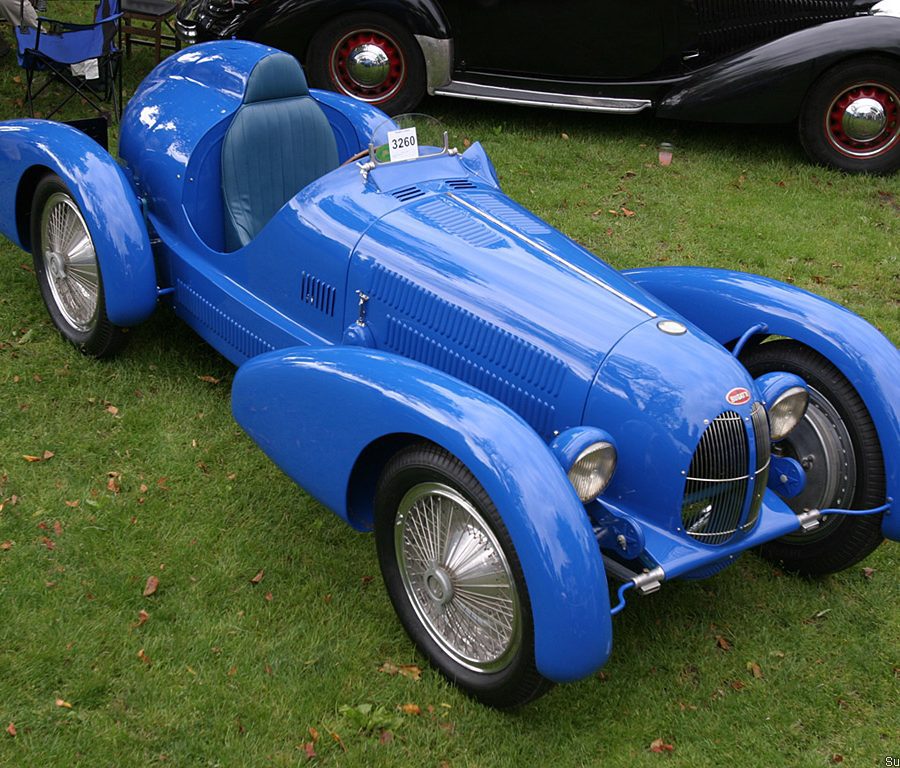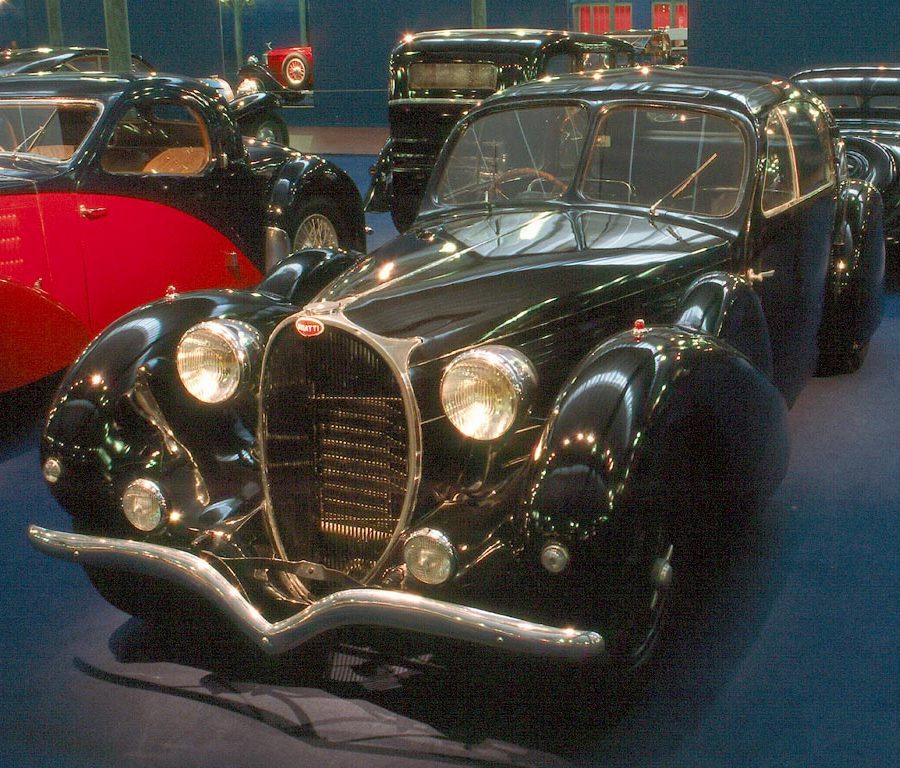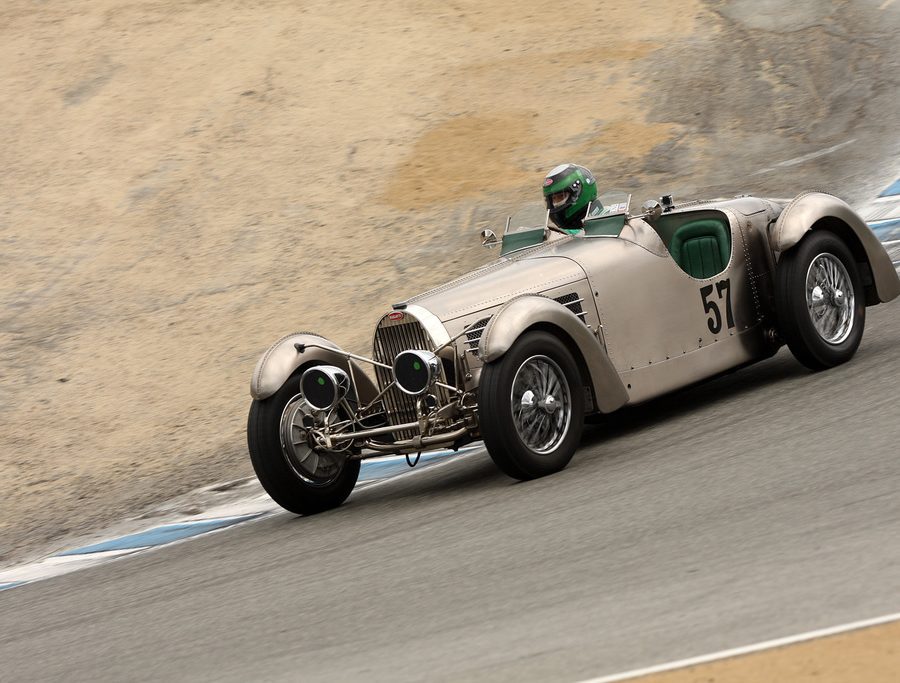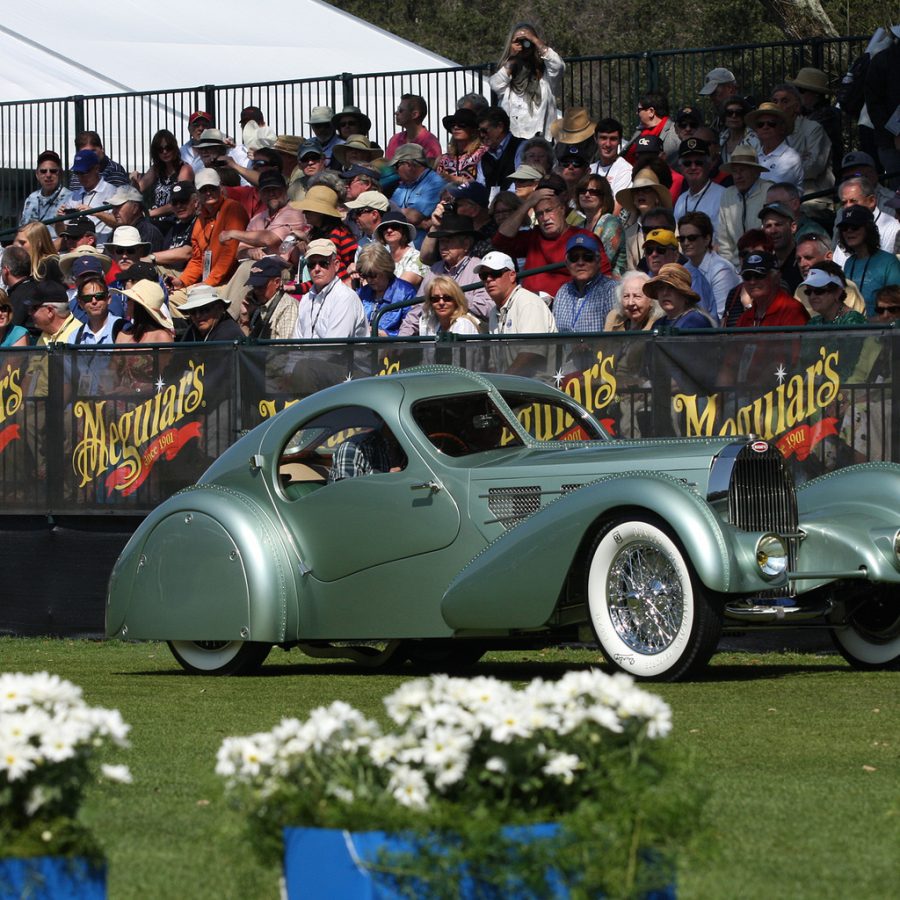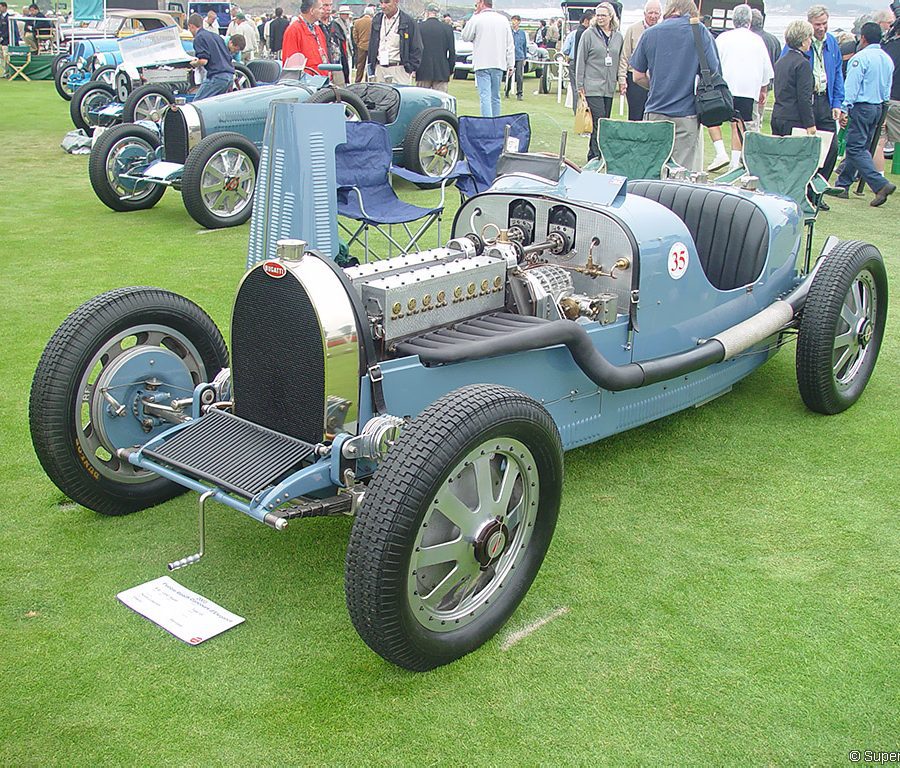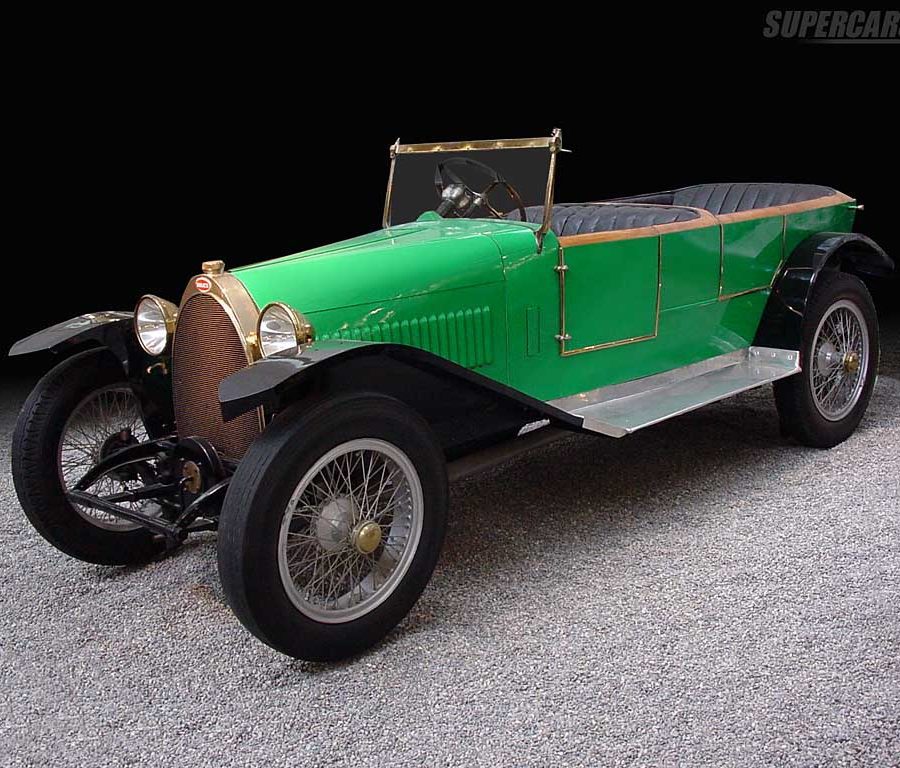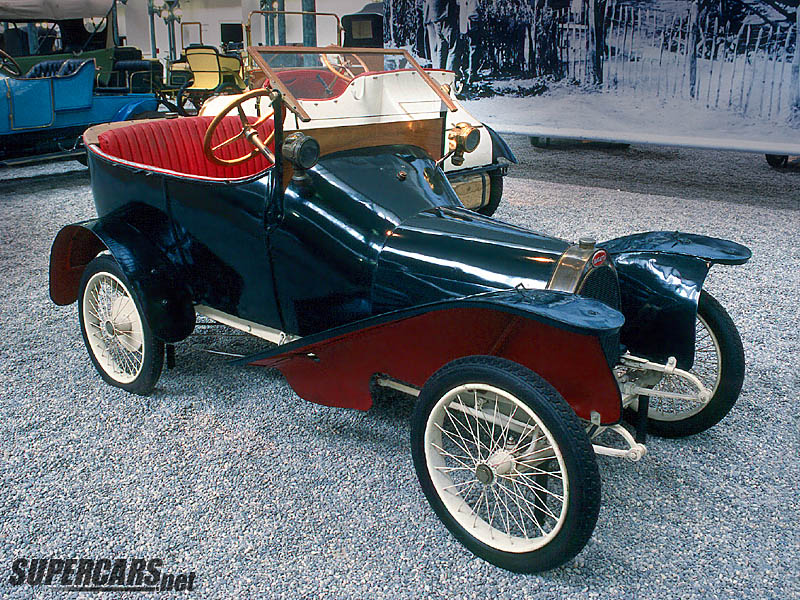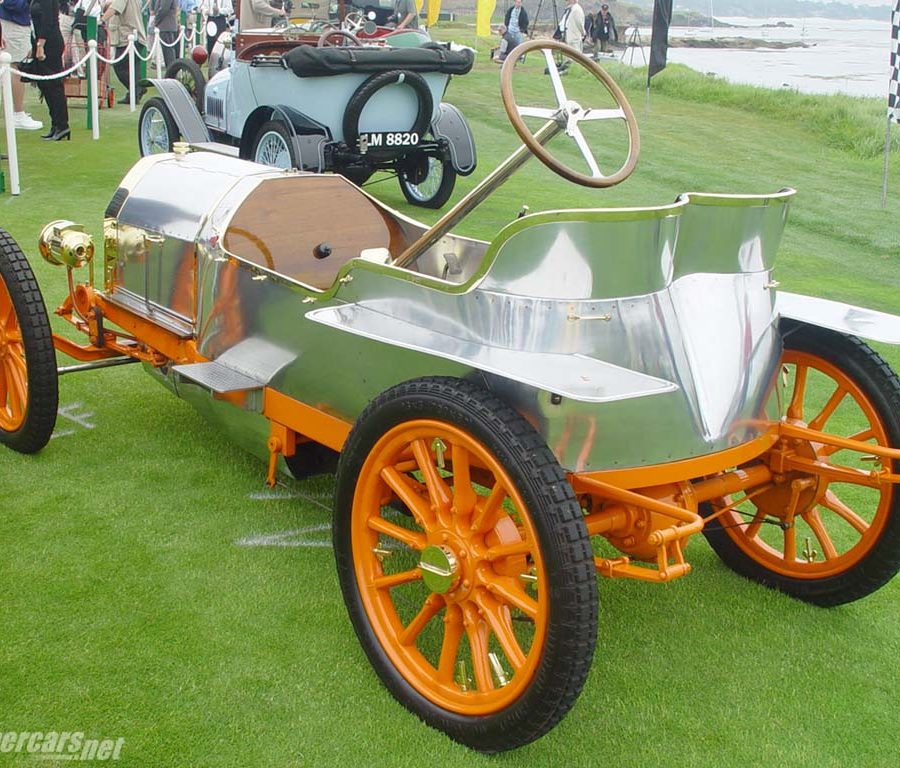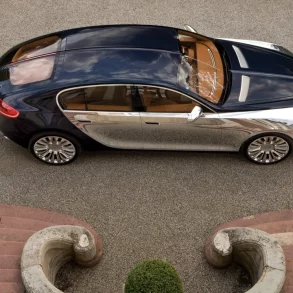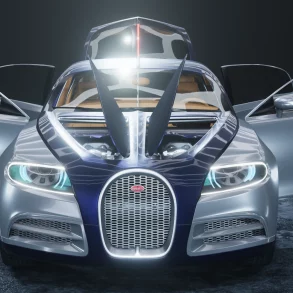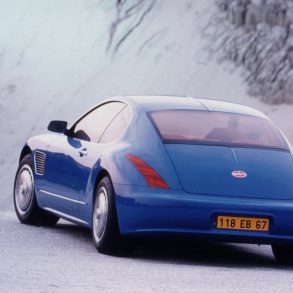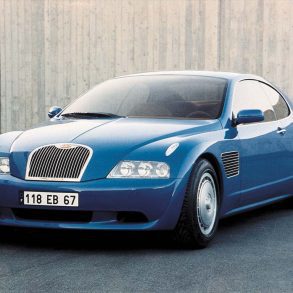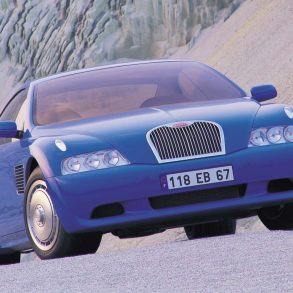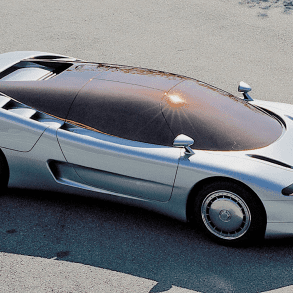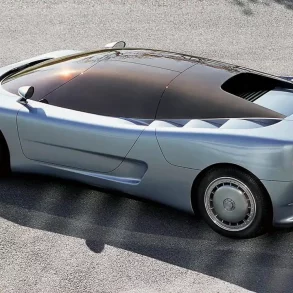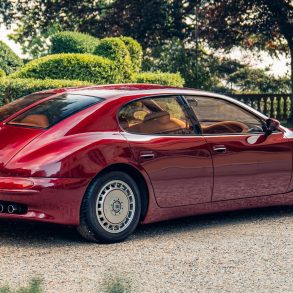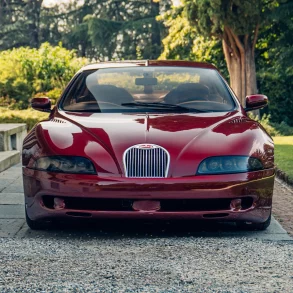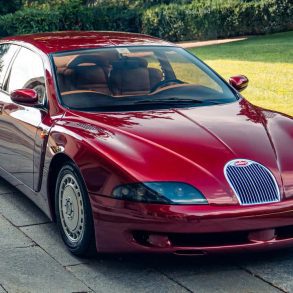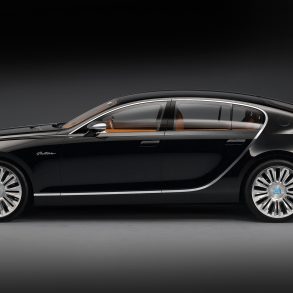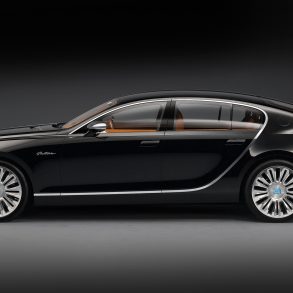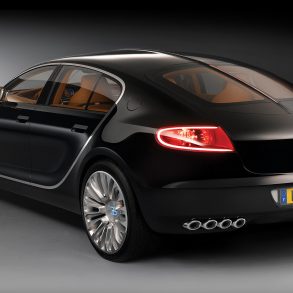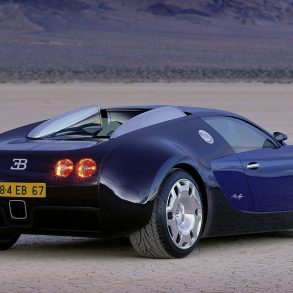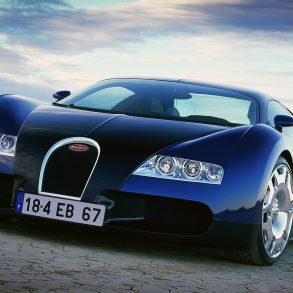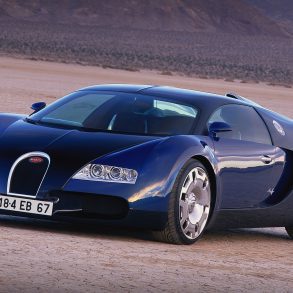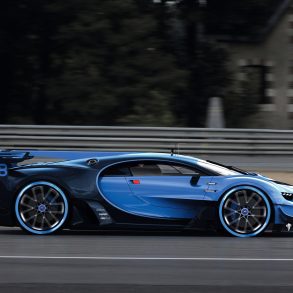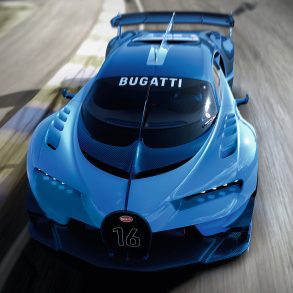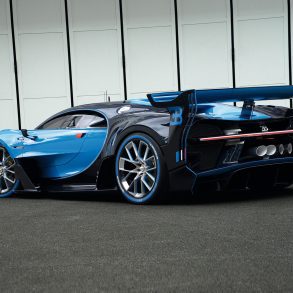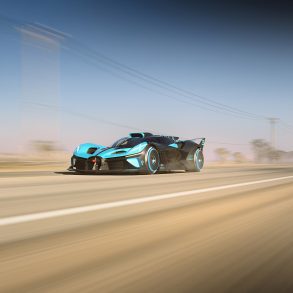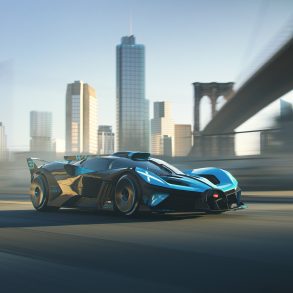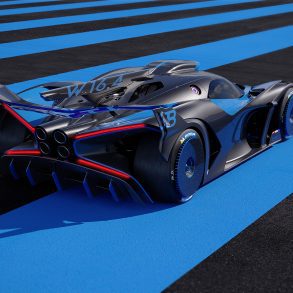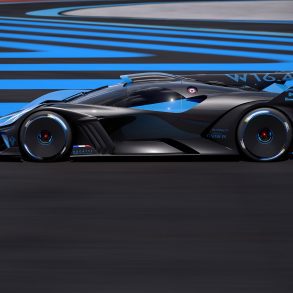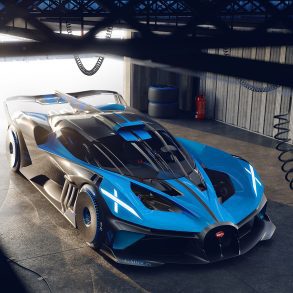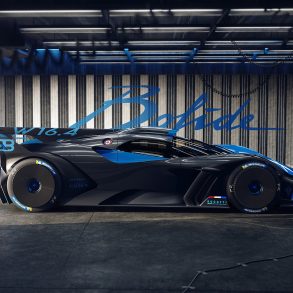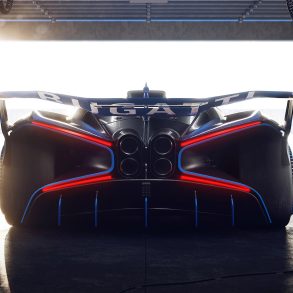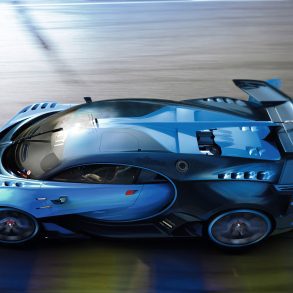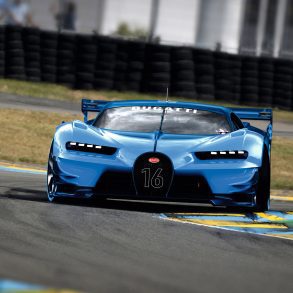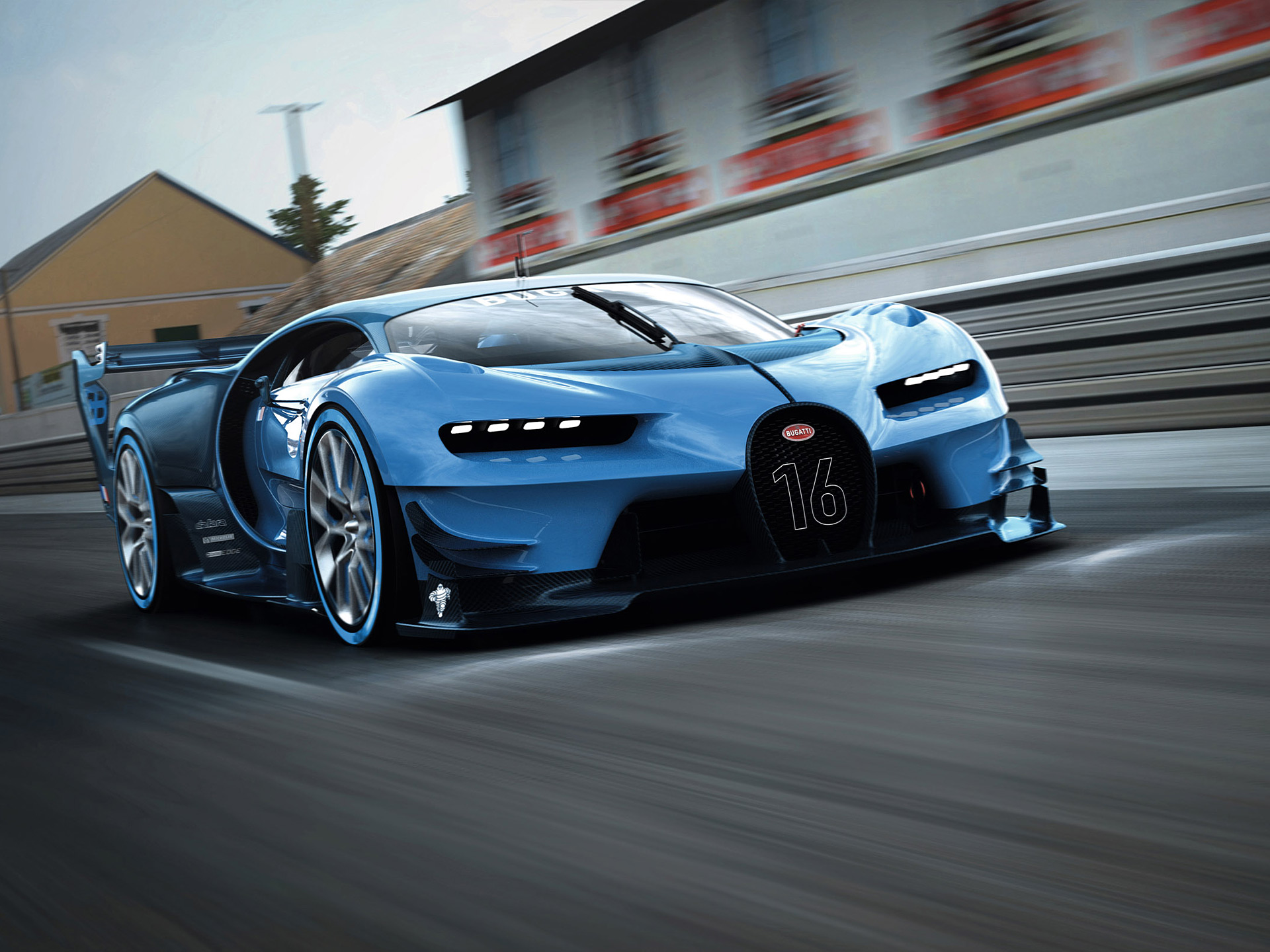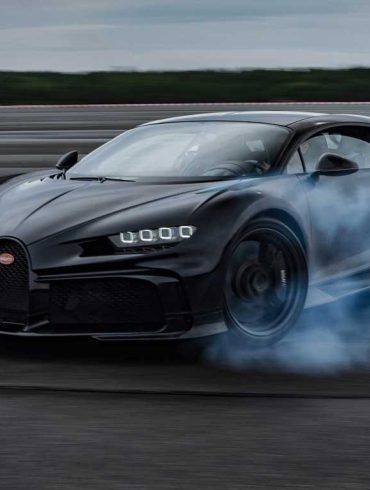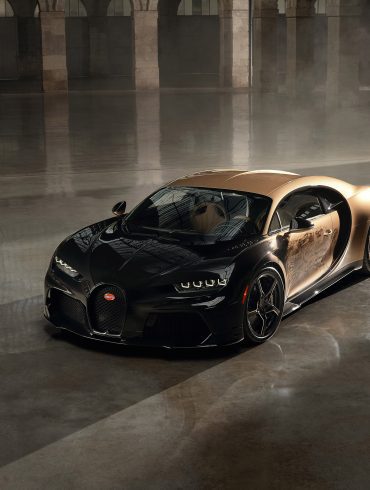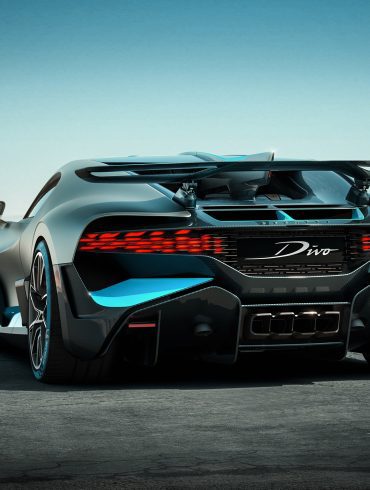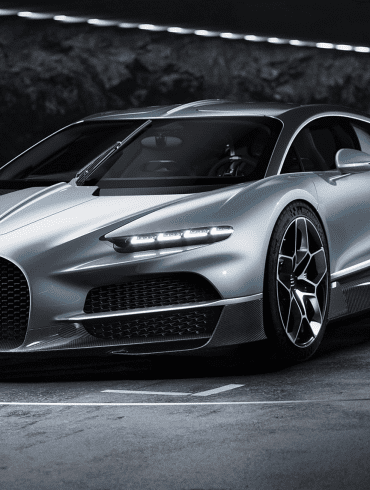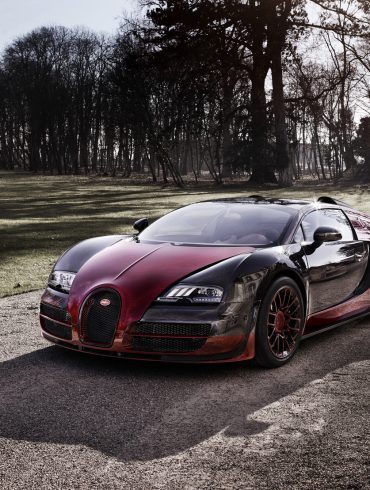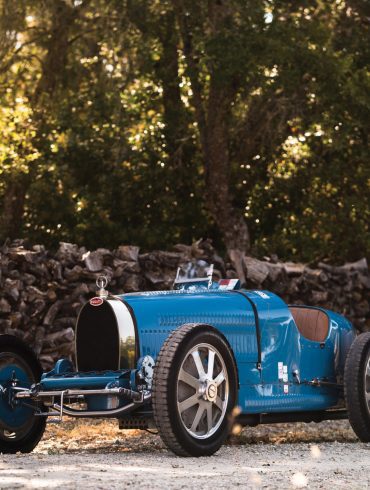When a carmaker is preparing to release a new model, they usually have test mules or prototypes built to perform tests with, these days a lot of the preparation is done virtually, many thousands of miles are ‘driven’ on a computer before a working prototype is made, and more often...
Bugatti Concept Cars
Whether we are talking about the outrageous Bugatti Bolide concept or the otherworldly Vision Gran Turismo, the folks at Bugatti know how to create cars that are absolutely awesome visions of the future. And they have been doing it for decades. Keep 'em coming Bugatti.
Full Model List / Models In-Depth / Image Gallery / Best Bugatti Concepts
Every Bugatti Concept Car
This is a list of concepts and prototype vehicles created by Bugatti that never reached full production.
Bugatti Type 10 “Petit Pur Sang” (1908)
Bugatti Type 19 Bebe Concept (1911)
Bugatti Type 28 Torpedo Concept (1921)
Bugatti Type 45 Bi Motor (1930)
Bugatti Type 57 Aérolithe (1934)
Bugatti Type 57S Prototype (1935)
Bugatti Type 64 Coupe (1939)
Bugatti Type 73C (1944)
Bugatti Type 252 (1957)
Bugatti ID 90 Concept (1990)
Bugatti EB112 Concept (1993)
Bugatti EB118 Concept (1998)
Bugatti EB218 Concept (1999)
Bugatti 18/3 Chiron Concept (1999)
Bugatti 18/4 Veyron Concept (2000)
Bugatti 16/4 Veyron Concept (2001)
Bugatti Veyron Preproduction (2002)
Bugatti Galibier 16C (2009
Bugatti Vision Gran Turismo (2015)
Bugatti Bolide Concept (2020)
Bugatti Bolide Prototype (2023)
Best Bugatti Concept Cars Ever Created
We Pick The Ten Greatest Bugatti Concepts
The downside of being a company that has almost always had financial troubles (other than more recently under VW ownership) is that you are always trying to create excitement around your brand. Over the years Bugatti has tantalized us with their concepts and prototypes only to disappoint us by not making the actual cars. This post is an ode to what could have been. It is a list of the coolest Bugatti concepts and prototypes that have been developed by Bugatti over the years that didn’t quite make it over the hurdles needed to make full production. Too bad because there are nine epic, obscure and just plain cool cars we wish Bugatti made.
1. Bugatti ID 90
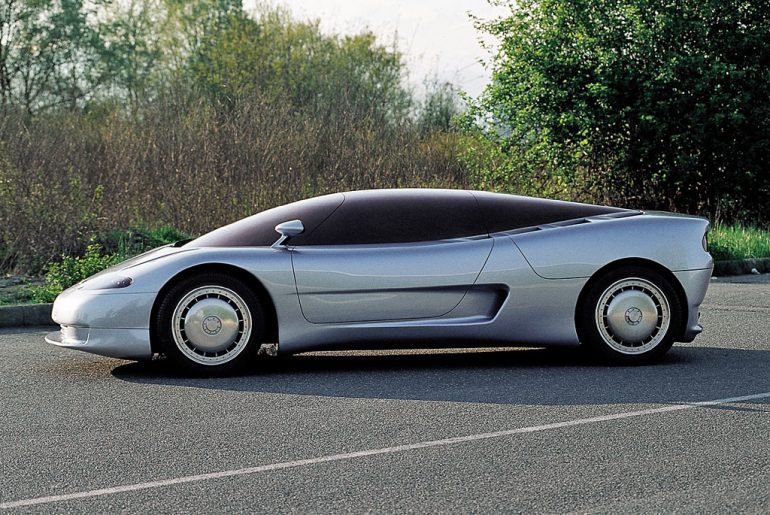
It has the EB110 powertrain
Why Is This The Best Bugatti Concept Car?
Shown at the 1990 Turin Motor Show, this is the very first Bugatti designed by Giugiaro, the concept also shared some of the styling cues with the EB 110 production model.
It had a mid-mounted 3.5-liter V12 engine with four turbochargers and all-wheel drive. It received a set of retro-flavored wheels as a nod to the 1926 Royale.
The powertrain was derived from the EB110 with a 6.0-liter V12 with 455 horsepower, all-wheel drive, carbon fiber chassis, aluminum body.
2. Bugatti Vision Gran Turismo
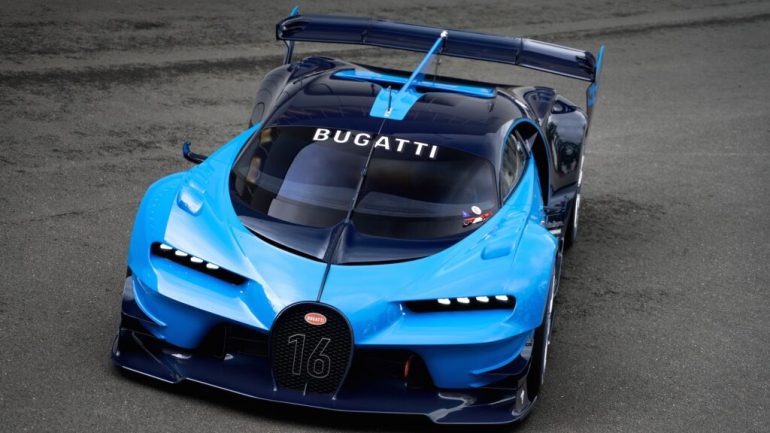
This virtual project previewed the design that would become the Chiron. It looks badass.
Why Is This The Best Bugatti Concept Car?
The Bugatti Vision Gran Turismo is a concept car created by Bugatti for the Gran Turismo video game series, specifically for Gran Turismo 6. Unveiled at the 2015 Frankfurt Motor Show, this concept was part of the Vision Gran Turismo project, where real-world automakers designed fantastical racing cars to be enjoyed in the virtual world of the game. The project allowed designers to explore creative ideas without the constraints of production feasibility, leading to some of the most imaginative and extreme vehicles in both the gaming and automotive worlds.
The Bugatti Vision Gran Turismo was designed to be a bridge between Bugatti's rich racing heritage and its contemporary design language. Its styling cues were inspired by the Bugatti Type 57 Tank and other historical Bugatti race cars, symbolizing the brand's successful racing history, particularly its victories at Le Mans in the 1930s.
While the Bugatti Vision Gran Turismo was primarily a design study without detailed specifications for its virtual engine, it was depicted with performance capabilities befitting the Bugatti name. The concept was imagined with a W16 engine, similar to the one found in the Bugatti Veyron and Chiron, ensuring incredible power and speed.
3. Bugatti Galibier 16C
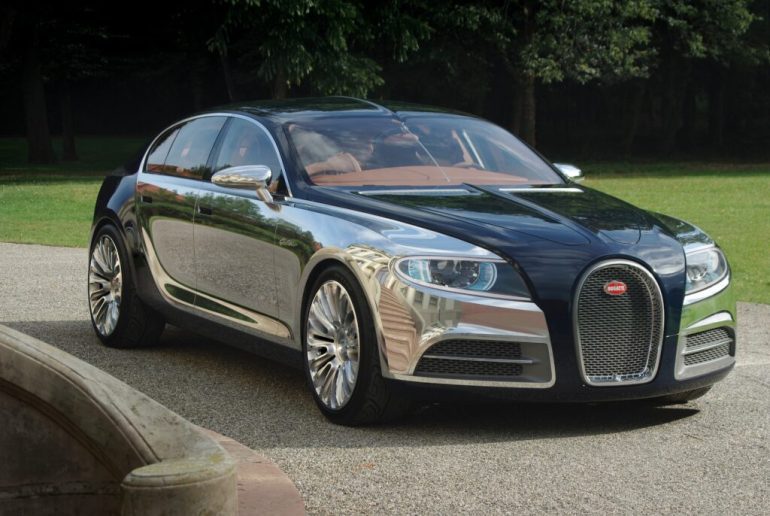
The Galibier's design seamlessly blended classic Bugatti aesthetics with contemporary elements.
Why Is This The Best Bugatti Concept Car?
The Bugatti Galibier 16C concept car, unveiled in 2009, marked Bugatti's exploration into expanding its lineup with a four-door luxury sedan. Named after the Col du Galibier, one of the highest passes in the Alps and a testament to endurance and performance, the Galibier 16C aimed to redefine the ultra-luxury sedan segment with unparalleled performance and opulence, reminiscent of Bugatti's historical prowess in creating grand tourers.
The Galibier's design seamlessly blended classic Bugatti aesthetics with contemporary elements, showcasing a sleek, flowing silhouette that was both elegant and dynamic. The exterior featured the brand's signature cues, such as the horseshoe grille and a central fin that recalled the iconic Type 57SC Atlantic. The body was made from a combination of carbon fiber and polished aluminum, striking a balance between lightweight construction and luxury.
One of the most notable design features of the Galibier was its unique roof, made from polished aluminum and dark blue carbon fiber, which extended from the hood to the rear in a single, uninterrupted piece. Beneath the bonnet, which folds back from both sides, there resides a 16-cylinder, 8-litre engine with two stage supercharging. What makes this engine special is that it was developed as a flex-fuel engine and can optional be run on ethanol.
4. Bugatti Type 252
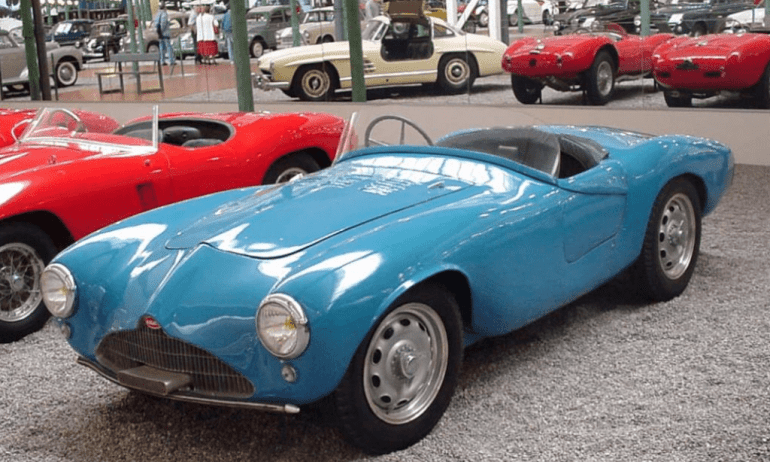
More affordable and practical vs the existing Bugatti models, but still luxurious and high-performance.
Why Is This The Best Bugatti Concept Car?
This 2-seat convertible is a one-off sports car developed by Bugatti between 1957 and 1962. However the Bugatti Type 252 never went beyond the prototype stage. Intended as a more affordable and practical alternative to the existing Bugatti models, but still luxurious and high-performance.
The Bugatti Type 252 is the result of a mid-size sports car study conducted by Roland Bugatti and was designed by Giovanni Michelotti. It was reportedly pitched to multiple different investors but never was funded and remained a one-off.
It is powered by a 1.5 L inline 4 engine with twin overhead camshafts and uses MacPherson strut suspension in the front and rear. During development, the car suffered numerous engine problems. Design was inspired by the earlier Type 57 but with a more modern and aerodynamic silhouette.
Several prototypes were built and tested, but the project faced numerous technical challenges, including engine problems and financial constraints. Never received full approval for production due to the company's financial struggles and eventual sale to Hispano-Suiza in 1963. The Type 252 remained a one-off prototype, never reaching the market.
5. Bugatti Type 57 Aérolithe
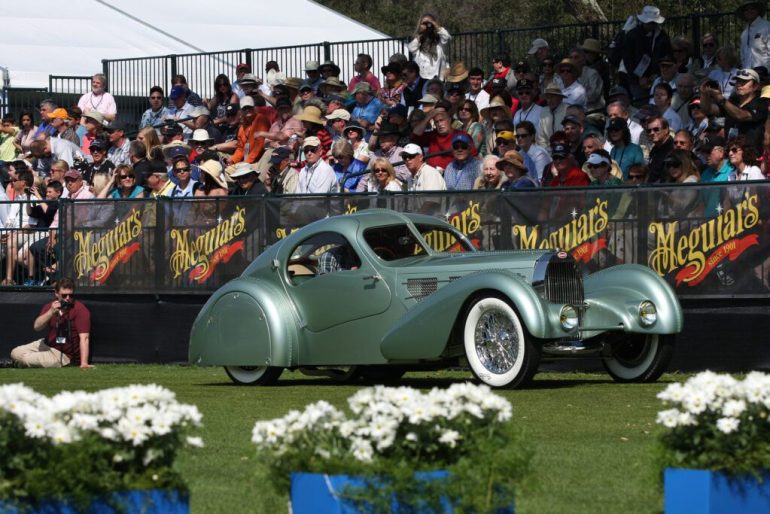
Design and innovative spirit inspired the Bugatti Type 57 Atlantic and still fascinates enthusiasts today.
Why Is This The Best Bugatti Concept Car?
In 1935 Bugatti showed off their prowess at the 1935 Paris Motor Show with the prototype Aérolithe Compétition Coupé that was used an exhibition car and subsequently destroyed.
Bugatti intended to manufacture the Aérolithe and other prototype Type 57S cars from Electron, an alloy of magnesium and aluminum from IG Farben of Germany.
Though it is strong, and up to one third the weight of aluminum, it is also highly flammable thus welding was not possible.
This meant that each panel had to be riveted into place which posed a particular problem for traditional design. Therefore, Jean incorporated the rivet’s aesthetic into the wings of the car and created a telling combination of function and form.
Unfortunately, the Aérolithe never went into production due to the complex manufacturing process and the flammable nature of Elektron. Only one prototype was built, which was later destroyed during World War II.
6. Bugatti Type 64 Coupe
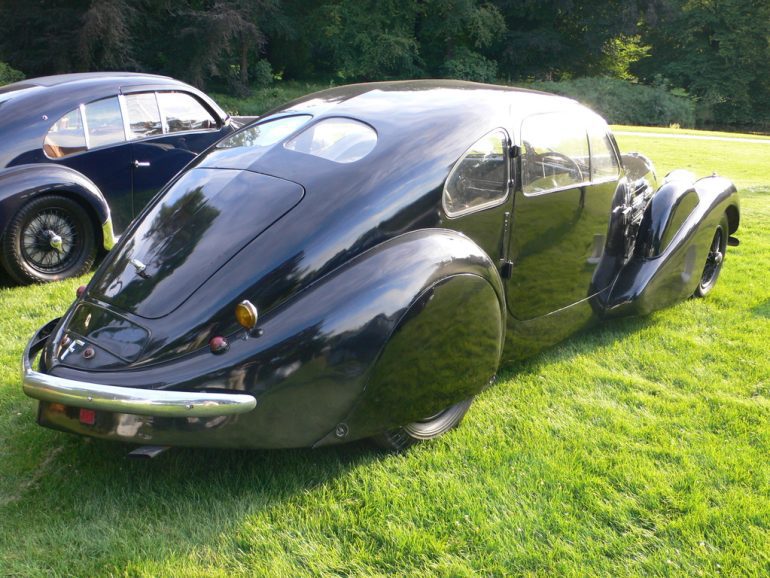
Atlantic-style coupe produced in 1939 with gull-wing doors, designed by Jean Bugatti.
Why Is This The Best Bugatti Concept Car?
The Bugatti Type 64 was an Atlantic-style coupe produced in 1939 with gull-wing doors, designed by Jean Bugatti.
It was fitted with a 4.4 L 2-valve DOHC straight-8 engine and rode on a 130 inch wheelbase. There was a Bugatti Type 64 prototype developed as a potential successor to the Type 57.
It never went into full production due to Jean Bugatti's untimely death and the outbreak of World War II.
Only one complete vehicle with a "Coach Surprofilée" bodywork existed, and another chassis was partially built. This prototype could be what you're referring to, but it wasn't officially named a "Coupe."
7. Bugatti Bolide Concept
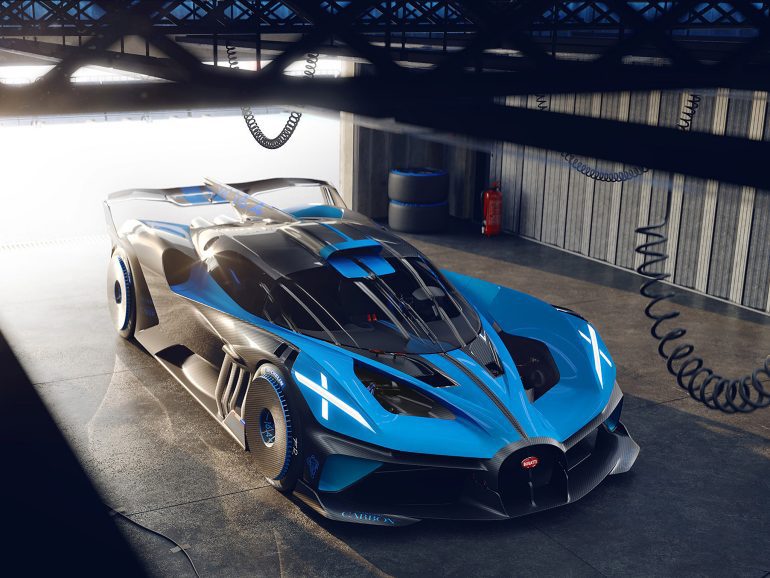
Bugatti Automobiles S.A.S. revealed they would turn the La Bolide into a limited edition track only car.
Why Is This The Best Bugatti Concept Car?
The Bugatti Bolide is an experimental concept car unveiled by Bugatti in October 2020. Representing a radical departure from the brand's recent focus on luxury hypercars like the Chiron, the Bolide concept emphasizes extreme performance and track capability. The name "Bolide" refers to a term used in astronomy to describe exceptionally bright meteors, and in the automotive world, it's often associated with very fast race cars. The Bolide concept showcases what is technically feasible by combining Bugatti's iconic W16 engine with a minimalistic, lightweight construction to achieve unprecedented performance figures.
The Bugatti Bolide features an aggressive, aerodynamically optimized design that prioritizes downforce and cooling. Its appearance is striking, with a low-slung profile, massive air intakes, and a distinctive X-themed lighting design inspired by modern aerospace and motorsport cues. The design includes an innovative morphable skin on the intake scoops on the roof, which optimizes airflow by becoming more aerodynamic at high speeds.
At its heart, the Bolide is powered by a quad-turbocharged 8.0-liter W16 engine, similar to the one found in the Chiron. However, for the Bolide, Bugatti has significantly increased its output to achieve around 1,850 horsepower (1,382 kW) and 1,850 Nm (1,364 lb-ft) of torque, although these figures are achieved with 110-octane racing fuel. The power-to-weight ratio is astonishing, with the vehicle weighing only around 1,240 kilograms (2,733 lbs), thanks to extensive use of lightweight materials such as carbon fiber and titanium.
8. Bugatti Type 73C
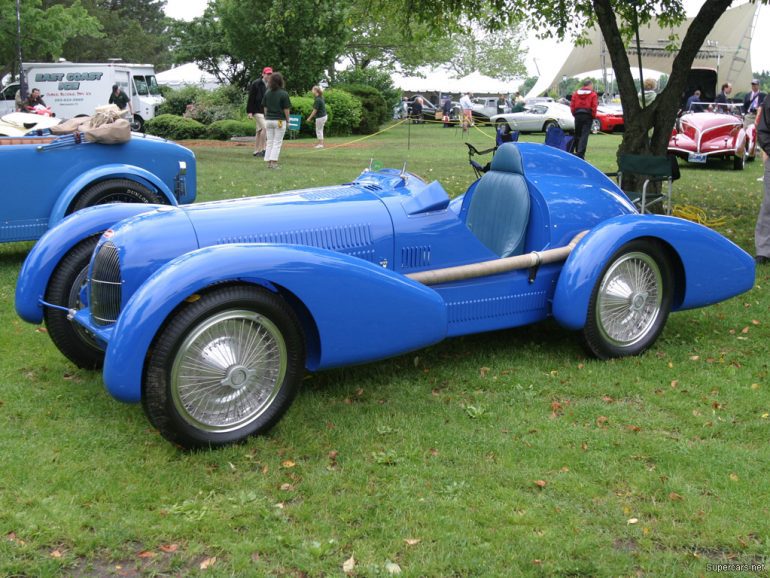
Ettore Bugatti's final project before his death, showing his innovative spirit and passion for engineering.
Why Is This The Best Bugatti Concept Car?
Bugatti, assisted by his designers Noel Domboy and Antoine Pichetto, spent the war years planning a new four cylinder racing car. By 1944, his plans for production were well advanced and the newest Bugatti was to have a supercharged 1500cc 16-valve engine with twin camshafts.
The Type 73C was to be a comeback for Bugatti. The death of Ettore Bugatti in August of that year doomed the project. An engine-less Type 73 was shown at the 1947 Paris Motor Show two months later.
No more than twenty examples were to be built in the old La Licorne factory in the Paris suburb of Levallois at a price of 500,000 French francs each. Five were to be delivered in April 1946, with five more during each of the next three months. Ettore Bugatti died in August 1947 before a single example of either type had been fully assembled.
Today, the Type 73C and other vehicles from the Type 73 series are reminders of Bugatti's rich heritage and the innovative spirit of its founder. They stand as testament to a period when automotive design and engineering were rapidly evolving, and Bugatti was at the forefront of this innovation.
9. Bugatti EB 118
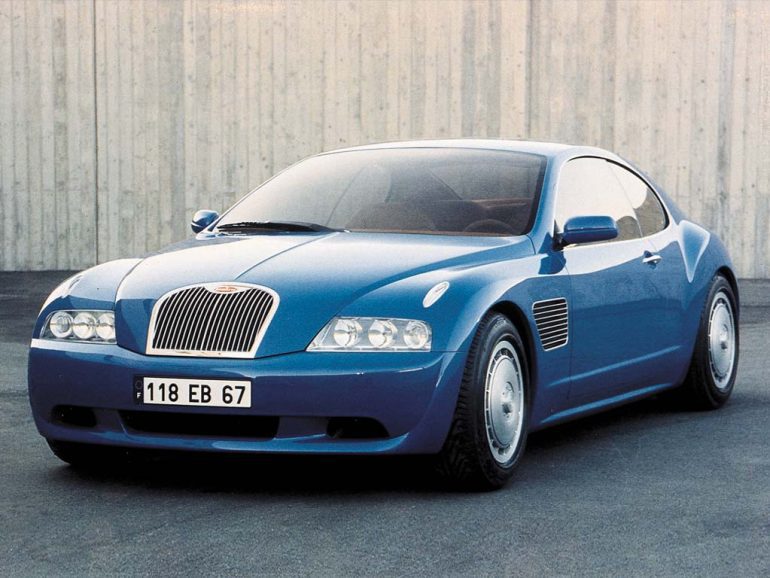
Marked the first introduction of the Bugatti brand under the ownership of the Volkswagen Group.
Why Is This The Best Bugatti Concept Car?
After the purchase of Bugatti by Volkswagen, they began an ambitious program with the EB118. It was a new concept car meant to showcase the world’s first 18 cylinder engine with three rows of 6 cylinders in a W arrangement.
Giorgetto Giugiaro was responsible for the design which he later called his greatest car. With this design he brought back the classic Bugatti shoehorn grill and a sloping rear end reminiscent of the Type 64 with its center crease line.
Unveiled at the 1998 Paris Motor Show, the EB 118 was a grand touring coupe that showcased the direction Volkswagen intended to take with Bugatti, emphasizing luxury, performance, and advanced engineering. The "EB" in the name stands for Ettore Bugatti, the founder of the company, while "118" refers to the car's engine configuration and power output.
The EB 118 was powered by a 6.3-liter W18 engine, a unique configuration that was unusual for its time. This engine was capable of producing 555 horsepower and 479 lb-ft of torque, impressive figures that underscored Bugatti's commitment to performance. The concept car featured all-wheel drive, enhancing its handling and stability, and illustrating Volkswagen's intention to combine Bugatti's traditional strengths with cutting-edge technology. The interior of the EB 118 continued the theme of luxury and exclusivity, with high-quality materials and a design that prioritized comfort and opulence.
10. Bugatti Type 45 Bi Motor
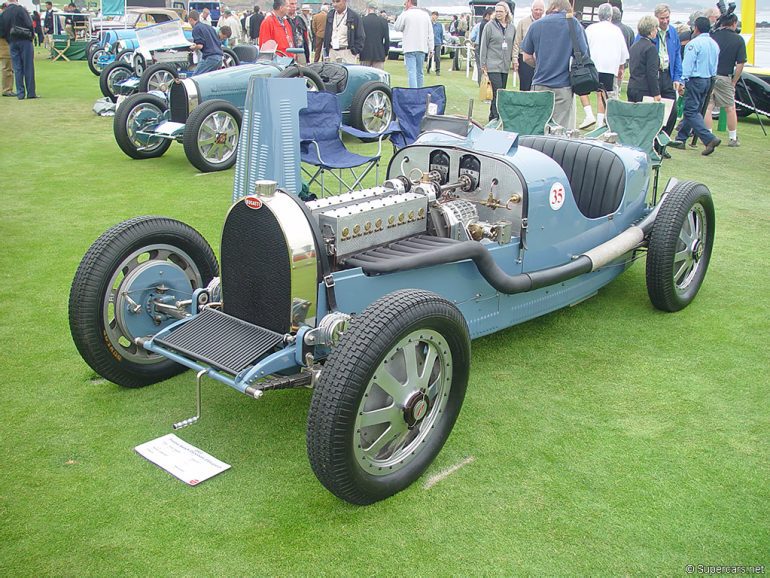
One of the earliest examples of Bugatti experimenting with innovative solutions to enhance performance.
Why Is This The Best Bugatti Concept Car?
The Bugatti Type 45 Bi-Motor was notable for its unique powertrain configuration, featuring two engines mounted in the car. The "Bi-Motor" design consisted of two straight-eight engines placed side by side, each displacing 1.5 liters, for a total displacement of 3.0 liters. This setup was aimed at doubling the power output to give Bugatti an edge in racing competitions.
The engines were designed to work synchronously, delivering power to the rear wheels, and were expected to produce a significant amount of horsepower for the time, although specific figures vary in historical accounts.
In the case of the Type 45, Bugatti was able to achieve 250 bhp, through this magical union of the two supercharged Type 35 Grand Prix engines. The bulky engine sat in a conventional Bugatti chassis which was renowned for its lightweight and nimble handling.
Despite its innovative design and potential for high performance, the Type 45 Bi-Motor did not achieve significant success on the racetrack. The complexities and costs associated with its dual-engine setup likely contributed to its limited production and use in competition. Only a few units were ever built, making the Type 45 Bi-Motor a rare and fascinating footnote in Bugatti's history.
Most likely, the heft of the U16 contributed to the Type 45’s lack of success. Bugatti only made this single car, and another rolling chassis


